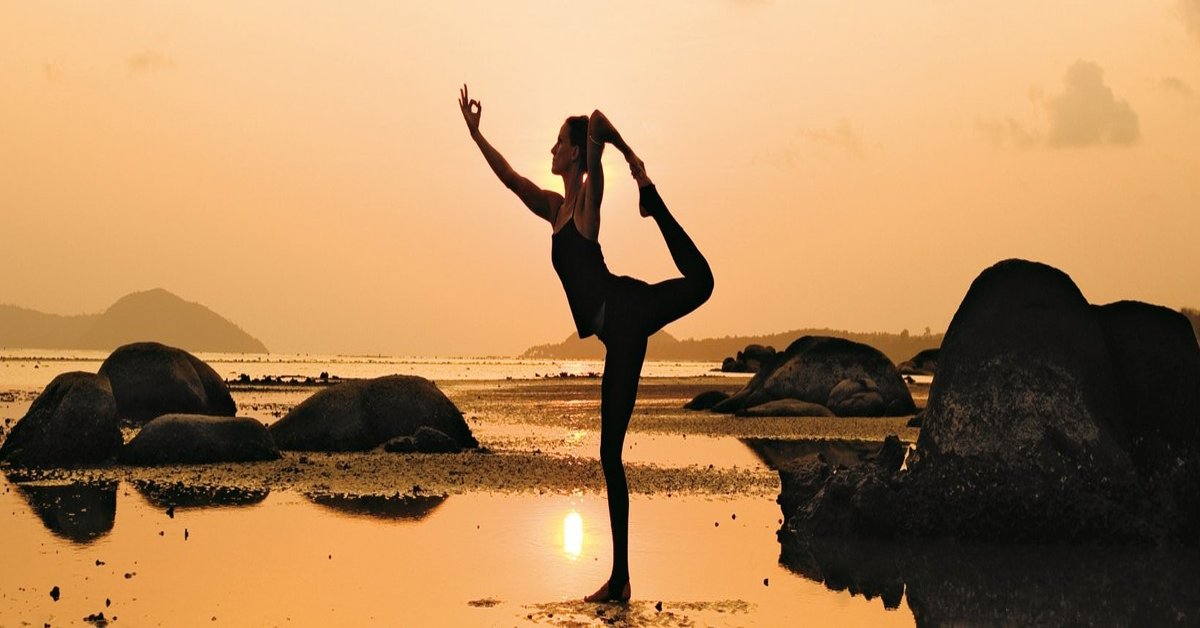
Through yoga, one can de-stress and maintain a healthy life. Here is a yoga pose to try.
Extended Triangle Pose
Extended Triangle Pose is the quintessential standing pose in many styles of yoga.
(oo-TEE-tah trik-cone-AHS-anna) utthita = extended trikona = three angle or triangle
Extended Triangle Pose: Step-by-Step Instructions

Step 1
Stand in Tadasana. With an exhalation, step or lightly jump your feet 3 1/2 to 4 feet apart. Raise your arms parallel to the floor and reach them actively out to the sides, shoulder blades wide, palms down.
Step 2
Turn your left foot in slightly to the right and your right foot out to the right 90 degrees. Align the right heel with the left heel. Firm your thighs and turn your right thigh outward, so that the center of the right knee cap is in line with the center of the right ankle.
Step 3
Exhale and extend your torso to the right directly over the plane of the right leg, bending from the hip joint, not the waist. Anchor this movement by strengthening the left leg and pressing the outer heel firmly to the floor. Rotate the torso to the left, keeping the two sides equally long. Let the left hip come slightly forward and lengthen the tailbone toward the back heel.
Step 4
Rest your right hand on your shin, ankle, or the floor outside your right foot, whatever is possible without distorting the sides of the torso. Stretch your left arm toward the ceiling, in line with the tops of your shoulders. Keep your head in a neutral position or turn it to the left, eyes gazing softly at the left thumb.
Step 5
Stay in this pose for 30 seconds to 1 minute. Inhale to come up, strongly pressing the back heel into the floor and reaching the top arm toward the ceiling. Reverse the feet and repeat for the same length of time to the left.
READ ALSO: Yoga: simple yet challenging
Pose Information
Sanskrit Name
Utthita Trikonasana
Pose Level: 1
Contraindications and Cautions
Diarrhea
Headache
Low blood pressure
Heart Condition: Practice against a wall. Keep the top arm on the hip.
High blood pressure: Turn the head to gaze downward in the final pose.
Neck problems: Don’t turn your head to look upward; continue looking straight ahead and keep both sides of the neck evenly long.
Modifications and Props
If it isn’t possible to comfortably touch the floor with the bottom hand or fingertips, support the palm on a block.
Deepen the Pose
For more experienced students, align the front heel with the back foot arch.
Preparatory Poses
Tadasana
Vrksasana
Follow-up Poses
Standing poses, seated forward bends, or twists
Beginner’s Tip
Brace your back heel or the back of your torso against a wall if you feel unsteady in the pose.
Benefits
Stretches and strengthens the thighs, knees, and ankles
Stretches the hips, groins, hamstrings, and calves; shoulders, chest, and spine
Stimulates the abdominal organs
Helps relieve stress
Improves digestion
Helps relieve the symptoms of menopause
Relieves backache, especially through the second trimester of pregnancy
Therapeutic for anxiety, flat feet, infertility, neck pain, osteoporosis, and sciatica
Partnering
A partner can help you learn how to move into this pose properly. Have your partner stand in front of your forward foot, facing you. Inhale the forward arm up, parallel to the floor. Your partner can grasp your wrist and wedge his/her big toe into the forward hip crease. As you exhale, have your partner pull on your arm and push into your hip crease, stretching the underside of your torso.
Variations
Instead of stretching the top arm toward the ceiling, stretch it over the back of the top ear, parallel to the floor.

Post Your Comments